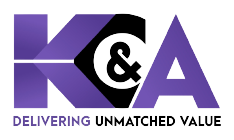Numerous software and technology development companies often overlook the possibility of qualifying for government tax incentive programs or mistakenly assume that such programs do not pertain to their particular organizations. Even those who possess knowledge of these programs often fail to fully capitalize on the tax credits they are entitled to receive.


For instance, many taxpayers erroneously believe that only specially trained engineers involved in designing innovative and groundbreaking patented products or processes are eligible for the R&D tax credit according to the U.S. tax code. While having patents can serve as substantial evidence for qualifying activities, it is not an obligatory requirement. Furthermore, other collaborative employees and expenses outside the realm of traditional engineering and development roles may also qualify for the R&D tax credit.
Listed below are various federal tax incentives that could potentially apply to your business, presenting opportunities for cost savings and potential refunds. If any of these credits appear relevant to your business, allow KC&A to assist you in claiming the credits you rightfully deserve.
Software development companies have the potential to qualify for R&D tax credits by engaging in eligible research activities. Here are some examples of activities that may be eligible for R&D tax credits:
- Perform technical research on requirements, domain, software elements, and scope analysis
- Perform technical research on programming, compiling, and software source code
- Perform technical research and analysis on testing (unit, integration, functional, performance, regression) for software enhancements
- Develop and/or improve programming software source code
- Develop code for new and/or improved software architecture, algorithms, and features
- Develop new and/or improved software embedded in hardware products
- Develop new and/or improved system software, operating systems, compilers, and internal processes
- Develop new and/or improved rule engines for content and model management
- Develop new and/or improved functional enhancements or capabilities for existing applications
- Develop new and/or improved interactive software for specific applications (streaming content, music/video games)
- Develop new and/or improved specialized technologies (e.g., artificial intelligence, deep/machine learning, voice recognition)
- Design new and/or improve structural software architecture and functional relationships between modules
- Design new and/or improved database management techniques
- Integrate new and/or improved electronic interfaces or functional relationships between software modules
- Evaluate new and/or improved functional specifications, research, developments, and designs
- Evaluate alternative programming languages to support software components
- Test source code through model simulations, prototypes, alpha/beta testing
Digital/Programmatic Marketing companies may qualify for R&D tax credits by engaging in eligible research activities. Some examples include:
- Develop new and/or improved software for tracking, monitoring, and optimizing marketing and advertising campaigns
- Develop new and/or improved algorithms for SEO, paid search, or advertising campaigns
- Design new and/or improved databases for enhanced efficiency, speed, or user functionality
- Develop new and/or improved data collection processes
- Develop or integrate new and/or improved CRM software
- Design new and/or improved business intelligence algorithms for improved functionality and accuracy
- Develop new and/or improved RTB solutions for efficiency scaling, prediction mechanisms, ad fraud detection, or bid optimization
- Develop advanced advertising workflows using various programming languages
- Design new and/or improved software solutions for PMP, Deal Discovery, Header Bidding, and Real Time Guaranteed
- Design high-performance, distributed, low-latency systems for billions of daily ad impressions
- Collaborate with engineering and product teams across multiple locations
- Evaluate and test software developments for improved efficiency, scalability, and stability
IT and Telecommunication companies may qualify for R&D tax credits by engaging in eligible research activities. Some examples include:
- Perform technical research for new features and software enhancements
- Develop new or improved technologies, including nanotechnology and cyber-physical systems
- Develop, compile, and test software source code
- Develop and test prototypes through model simulations
- Design enhancements for scalable networksDesign structural software architecture
- Design electronic interfaces and functional relationships between software modules
- Evaluate and establish functional specifications
- Evaluate unit, integration, functional, performance, and regression testing
- Validate and evaluate cybersecurity and information protection assurance
- Develop and improve existing software programs for commercialization and third-party licensing including examples such as:
- Enterprise infrastructure/ERP software
- Digital asset/content/database management systems
- Accounting and financial software
- Logistics/distribution management software
- Document management systems
- Claims processing software
- Location monitoring systems
- Educational software
- Time and resource tracking software
- CRM software
- Analytical software
- Video game development software
- Food and beverage analysis software
- Marketing/sales software
- Healthcare management software
Blockchain companies may qualify for R&D tax credits by engaging in eligible research activities. Some examples include:
- Perform technical research to analyze, assess, and respond to blockchain threats
- Develop new and/or improved platforms or applications with enhanced features, functionality, performance, reliability, or quality
- Develop new and/or improved smart contracts for automated digital contract execution
- Develop algorithms for user privacy and consensus management in blockchain networks
- Design data collection, security, efficiency, and analysis solutions for distributed systems
- Design blockchain applications to comply with evolving government regulations
- Evaluate and test security applications for data privacy and protection on blockchain
- Design scalable back-end solutions
- Design and deploy secure blockchain patterns and solutions
- Design and integrate applications for managing processing nodes in public or sector-wide blockchains
- Test security assessments and control matrix review protocols
- Test and audit smart contract development protocols
- Evaluate network attacks and enhance threat and vulnerability protections
- Conduct penetration testing, security logging, and forensics to support R&D activities and platform improvement.
Contact KC&A today for your free R&D tax credit assessment and evaluation

